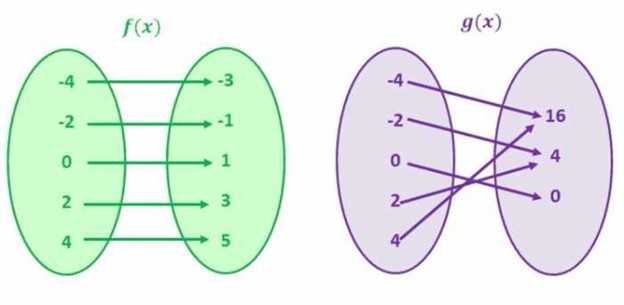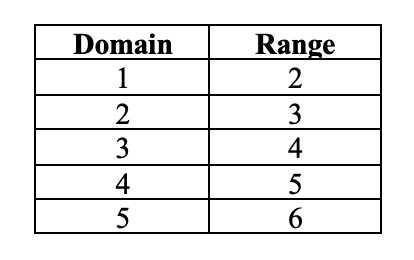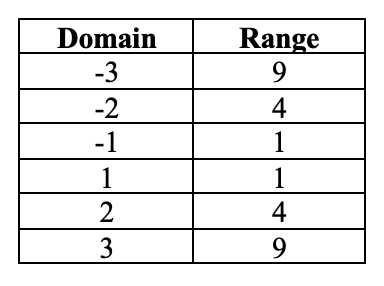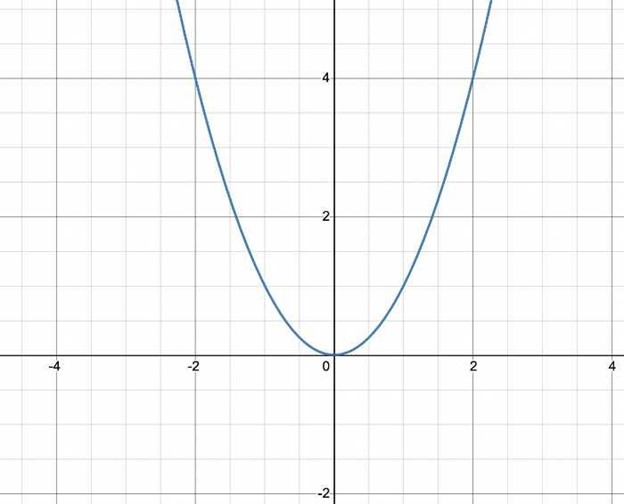One to One Functions - Graph, Examples | Horizontal Line Test
What is a One to One Function?
A one-to-one function is a mathematical function whereby each input correlates to only one output. In other words, for every x, there is just one y and vice versa. This signifies that the graph of a one-to-one function will never intersect.
The input value in a one-to-one function is noted as the domain of the function, and the output value is noted as the range of the function.
Let's examine the images below:

For f(x), each value in the left circle correlates to a unique value in the right circle. Similarly, each value on the right side corresponds to a unique value on the left. In mathematical words, this implies every domain holds a unique range, and every range has a unique domain. Thus, this is an example of a one-to-one function.
Here are some other examples of one-to-one functions:
-
f(x) = x + 1
-
f(x) = 2x
Now let's look at the second picture, which displays the values for g(x).
Pay attention to the fact that the inputs in the left circle (domain) do not own unique outputs in the right circle (range). For example, the inputs -2 and 2 have equal output, that is, 4. In the same manner, the inputs -4 and 4 have equal output, i.e., 16. We can comprehend that there are matching Y values for many X values. Hence, this is not a one-to-one function.
Here are different examples of non one-to-one functions:
-
f(x) = x^2
-
f(x)=(x+2)^2
What are the properties of One to One Functions?
One-to-one functions have the following characteristics:
-
The function has an inverse.
-
The graph of the function is a line that does not intersect itself.
-
The function passes the horizontal line test.
-
The graph of a function and its inverse are the same with respect to the line y = x.
How to Graph a One to One Function
In order to graph a one-to-one function, you are required to find the domain and range for the function. Let's examine an easy example of a function f(x) = x + 1.

Once you know the domain and the range for the function, you ought to plot the domain values on the X-axis and range values on the Y-axis.
How can you evaluate if a Function is One to One?
To test whether a function is one-to-one, we can leverage the horizontal line test. Immediately after you chart the graph of a function, draw horizontal lines over the graph. If a horizontal line moves through the graph of the function at more than one place, then the function is not one-to-one.
Because the graph of every linear function is a straight line, and a horizontal line will not intersect the graph at more than one place, we can also conclude all linear functions are one-to-one functions. Keep in mind that we do not apply the vertical line test for one-to-one functions.
Let's examine the graph for f(x) = x + 1. Once you plot the values of x-coordinates and y-coordinates, you have to consider whether a horizontal line intersects the graph at more than one spot. In this case, the graph does not intersect any horizontal line more than once. This signifies that the function is a one-to-one function.

Subsequently, if the function is not a one-to-one function, it will intersect the same horizontal line multiple times. Let's study the diagram for the f(y) = y^2. Here are the domain and the range values for the function:

Here is the graph for the function:

In this instance, the graph intersects various horizontal lines. For instance, for either domains -1 and 1, the range is 1. In the same manner, for either -2 and 2, the range is 4. This signifies that f(x) = x^2 is not a one-to-one function.
What is the opposite of a One-to-One Function?
Since a one-to-one function has a single input value for each output value, the inverse of a one-to-one function is also a one-to-one function. The inverse of the function essentially reverses the function.
Case in point, in the event of f(x) = x + 1, we add 1 to each value of x for the purpose of getting the output, i.e., y. The inverse of this function will subtract 1 from each value of y.
The inverse of the function is f−1.
What are the properties of the inverse of a One to One Function?
The characteristics of an inverse one-to-one function are the same as every other one-to-one functions. This means that the inverse of a one-to-one function will possess one domain for every range and pass the horizontal line test.
How do you figure out the inverse of a One-to-One Function?
Determining the inverse of a function is not difficult. You just have to switch the x and y values. For instance, the inverse of the function f(x) = x + 5 is f-1(x) = x - 5.

As we learned earlier, the inverse of a one-to-one function reverses the function. Because the original output value required adding 5 to each input value, the new output value will require us to delete 5 from each input value.
One to One Function Practice Questions
Examine the subsequent functions:
-
f(x) = x + 1
-
f(x) = 2x
-
f(x) = x2
-
f(x) = 3x - 2
-
f(x) = |x|
-
g(x) = 2x + 1
-
h(x) = x/2 - 1
-
j(x) = √x
-
k(x) = (x + 2)/(x - 2)
-
l(x) = 3√x
-
m(x) = 5 - x
For each of these functions:
1. Figure out whether the function is one-to-one.
2. Chart the function and its inverse.
3. Figure out the inverse of the function algebraically.
4. Indicate the domain and range of every function and its inverse.
5. Employ the inverse to determine the value for x in each formula.
Grade Potential Can Help You Learn You Functions
If you happen to be facing difficulties using one-to-one functions or similar topics, Grade Potential can set you up with a one on one instructor who can assist you. Our Ontario math tutors are skilled educators who help students just like you improve their understanding of these concepts.
With Grade Potential, you can work at your individual pace from the comfort of your own home. Plan a meeting with Grade Potential today by calling (909) 487-5043 to get informed about our tutoring services. One of our team members will get in touch with you to better determine your requirements to find the best tutor for you!




